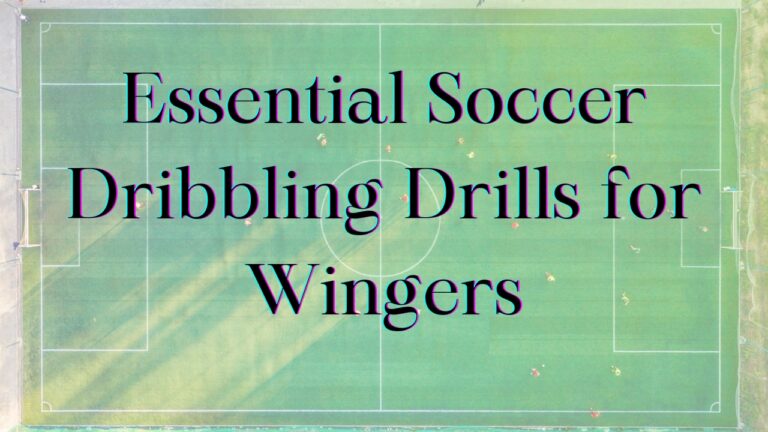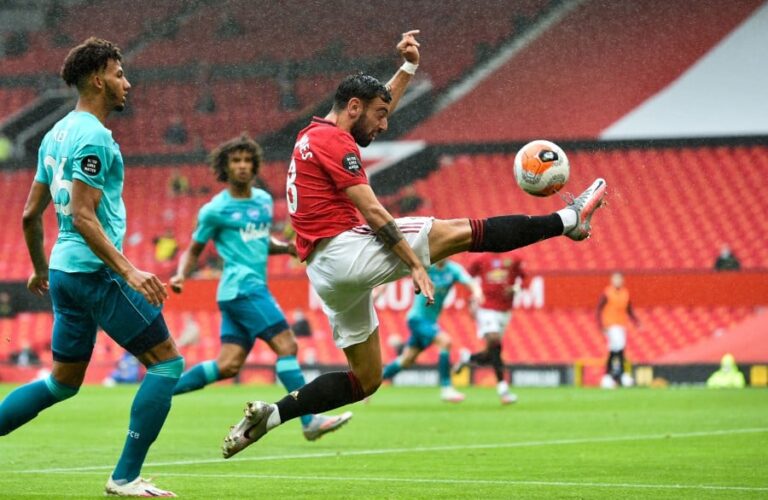Kicking a soccer ball accurately and powerfully is a fundamental skill that every player needs to master. While it may seem simple on the surface, several components go into an effective kick. In this blog post, we’ll break down the 10 key steps so you can consistently strike the ball just like the pros.
Step 1: Perfect Your First Touch
Before you can kick, you need solid control when receiving the ball. This first touch defines the stance and position you’ll be in to strike the ball. A poor first touch leads to decreased power and accuracy on your kick.
5 Drills to Improve First Touch
1. Stationary trapping and passing – Control the ball from your hands and pass back and forth with a partner.
2. Inside of foot control – Let the ball bounce and work on receiving it with the inside of the foot.
3. Outside of foot control – Same as above but use outside of the foot to bring it down.
4. Checking the ball – Make a controlling first touch on balls played to you tan hen immediate pass.
5. Checking away – Check away from the ball first, receive and pass.
If you consistently perform those 5 drills, you’ll have mastery over the ball before attempting to kick it.
Step 2: Keep Your Eyes Focused
It’s tempting to look upfield at defenders or the goal as you wind up. But you must keep your eyes fixed on the ball, staring at the exact point of contact on the ball throughout the kicking motion. This consistency builds accuracy in your strike.
Watch Video here
Step 3: Pay Attention to Both Feet
Proper foot placement from both feet plays a big role in power and direction. Point your non-kicking foot towards the target. It will help correct slight mishits from your kicking foot. Also, lock the ankle of your kicking foot. A rigid ankle transfers force better.
Step 4: Move Your Arms
Don’t overlook the importance of your arm motions. Fluid arm movement stabilizes the torso, helping coordinate the kicking leg. Build momentum by swinging your arms faster as you approach the ball. Upon contact, punch both arms forward to generate additional power.
Watch Video here
Step 5: Create a “V” Shape With Kicking Leg
Flexibility in your kicking leg allows you to cock it back in a “V” shape, loading up tension in the muscles right before release. Work on static and dynamic stretches daily if you cannot achieve a sharp “V”. The tension translates into added oomph on the kick.
Step 6: Maintain Correct Posture
Stay upright, resisting the urge to lean too far forward or back. A slight forward tilt is fine, but dramatic motion teaches poor mechanics. Posture sets the foundation, then let foot placement steer the ball’s flight.
Step 7: Angle Your Body ProperDo you
You know how your planting foot aims at the ball’s direction? Do the same thing with your torso alignment. Square up and turn your body towards the desired target area. Experiment with angling your shoulders and hips to influence the ball’s movement.
Step 8: Kick With Optimal Surface Area
There are 7 common kicking techniques in soccer, each utilizing a different part of the foot. The 4 most essential ones to practice are:
– Laces (top of shoelaces) – accurate drives
– Inside (inner midfoot) – controlled shots on frame
– Instep (top of foot) – power
– Toe poke (self-explanatory) – quick tight angle shots
Practice intentionally striking the ball with proper contact points for each type.
Step 9: Follow Through Every Kick
This one is often forgotten by beginners. But it’s crucial for accuracy and power. After the foot plants through the ball, continue swinging the leg in the direction you want it to travel. This follow-through helps lock in productive muscle memory.
Step 10: Repeat Drills Over Time
Like any skill, consistent repetition over time cements proper technique. After making progress on individual steps, combine them into comprehensive kicking drills. Videotape your sessions to spot errors and track progress. Sharpen form and power by practicing kicks from different angles and distances.
Improving Your Kicking Ability.
Now that you have the core kicking technique down, let’s talk about expanding your range and versatility as a striker of the ball. Every great goal scorer has multiple types of kicks in their arsenal to beat defenders and finish in different situations.
The Chip Shot
This delicate kick floats the ball over a charging goalie or defender right before it reaches the goal line. Mastering it requires precision touch and timing.
To perform:
– Approach casually, selling a regular kick
– Lean back slightly at the last moment
– Lift your knee and angle your toe downward
– Make contact with the bottom half of the ball
– Follow through, don’t stab at the ball
Practice chipping into an empty net from different angles to dial in the technique.
The Banana Shot
What’s more exciting than seeing a ball bend and curl? The banana shot starts straight but then swerves in a big arc towards the far post, fooling the goalkeeper’s reach.
To perform:
– Approach from a slight angle
– Strike the outside lateral edge of the ball
– Follow through toward the far post
– Your body shape and foot rollover put an English spin on it
The key is lots of spin from that angled indirect contact. Work the shape on free kicks too!
The Power Drive
When you have time and space, unleash fury on the ball by absolutely crushing it with your laces. This requires optimal mechanics and coordination to rocket shots with accuracy.
To perform:
– Widen your base stance for balance
– Get over the ball, aggressive body shape
– Pull back and snap your leg through the shoot zone
– Clean locked ankle, moving through the middle of the ball
– Follow your target
The drill is the non-stop repetition of strong drives. Condition yourself physically to put strength behind strikes.
Adding these advanced kicks along with the core technique provides unpredictability that will have defenders spinning. With a full kicking repertoire, you’ll be ready to strike from anywhere, beat any goalie, and be the most dangerous player.
Potential risks when practicing soccer kicking:
Be Aware of Injury Risks When Practicing
While mastering the art of kicking a soccer ball is thrilling, it’s important to be smart about your training regimen. Pushing too hard with improper technique or without care for your body can unfortunately lead to short and long-term injuries.
Here are a few guidelines for practicing safely:
Progress Slowly
When learning a new skill, start with very low intensity and volume to let your body adapt. Build up gradually over multiple sessions. This prevents overuse issues. Take your time with progress.
Listen to Warning Signs
If you ever feel sharp pain during the execution of a kick, stop the motion. Soccer requires repetitive impact, so soreness is expected. But joint instability, limping, and swelling are red flags not to ignore.
Allow Proper Recovery Time
Rotation of muscle groups is key. Don’t strike balls with the same leg for hours on end. Build off days into your training schedule. Let tissues heal by managing workload. Prioritize sleep, nutrition, and light movement like walking on non-kicking days.
Warmup/Cooldown Diligently
Always dedicate 10-15 minutes to preparing the body for activity and post-exercise as well. This pumps nutrients into joint cartilage and lubricates tissue. Static holds foam rolling, and light cardio prep the engine. Stretches afterward realign muscle fibers.
The goal should be feeling your best as you hone killer soccer skills. That only happens through smart, balanced training that respects the body’s needs. Avoid pain and injury so you can enjoy the game for years to come!
In Conclusions
Mastering how to kick a soccer ball requires patience. But with the blueprint above, dedicated work, and attention to detail, your strikes will soon be singing.
RELATED POST: 3 Drills To Improve Ball Control
Video: https://youtu.be/2SmmMKMMKjk?si=rONbbk3Snz77K0fw
https://www.wikihow.com/Kick-a-Soccer-Ball
AUTHOR: Will John
HOME OF THE WORLD’S BEST FOOTBALL/SOCCER TUTORIALS
Tutorials From Professional Footballers on how to improve your game and your life.
Links
GOLUREMI.COM
facebook.com/KingOluremiJohn?ref=hl
Video: https://youtu.be/2SmmMKMMKjk?si=rONbbk3Snz77K0fw






